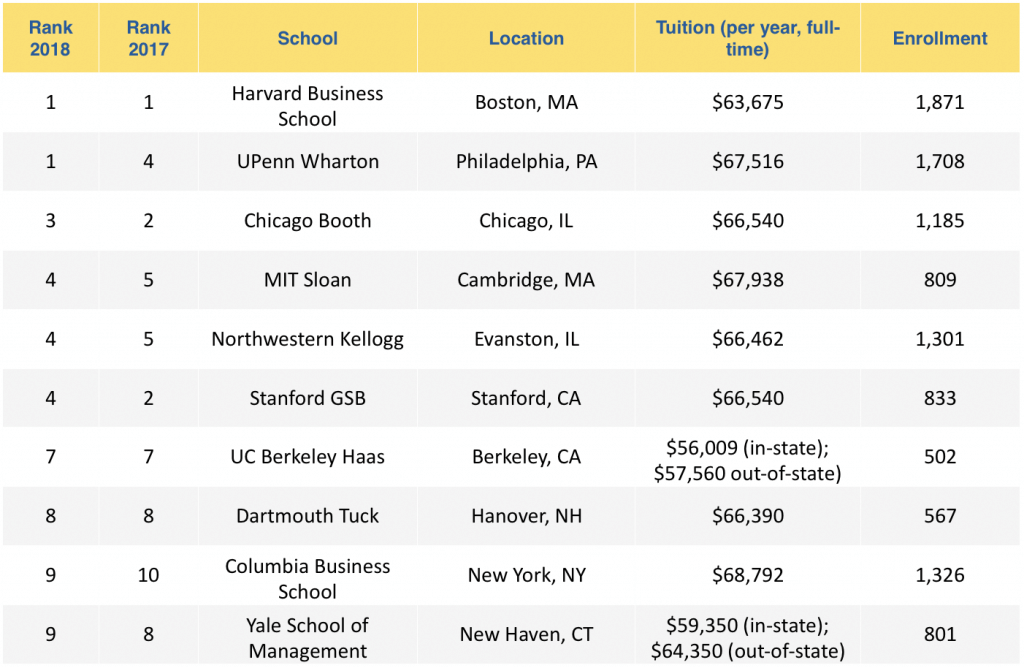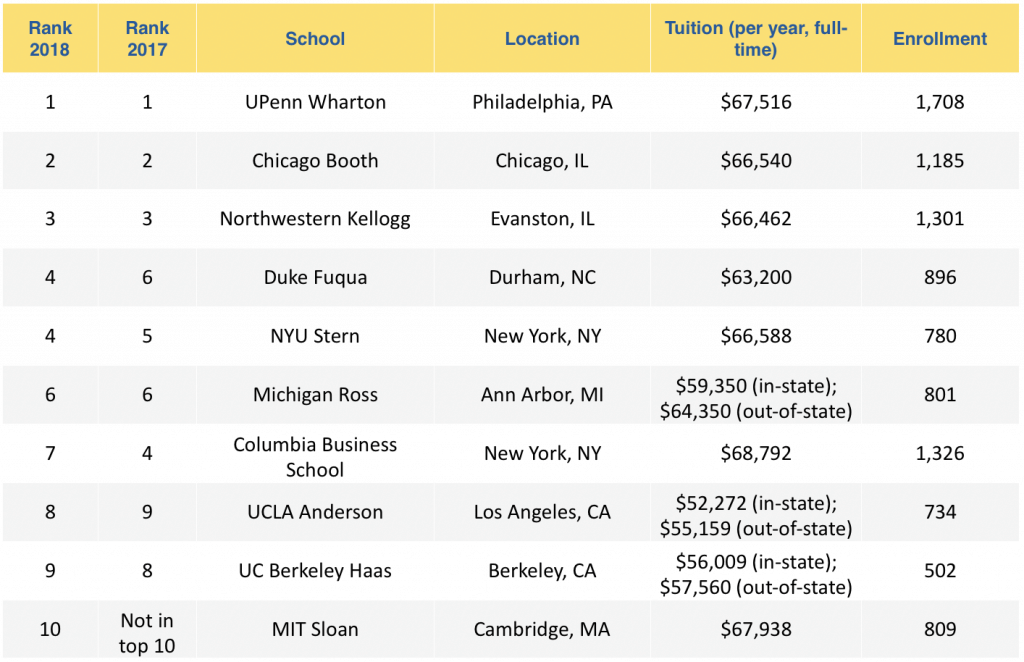
U.S. News & World Report surveyed all 471 MBA programs accredited by the Association to Advance Collegiate Schools of Business International in fall 2016 and early 2017. Of these, 377 responded and 131 were ranked (those that submitted enough of the necessary data on their full-time MBA programs that were needed to calculate the rankings). The rankings were based on a weighted average of the following indicators (see the methodology for more info):
• Peer assessment score (0.25)
• Recruiter assessment score (0.15)
• Mean starting salary and bonus (0.14)
• Employment rate for full-time MBA program graduates – at graduation (0.07), three months after graduation (0.14)
• Mean GMAT and GRE scores (0.1625)
• Mean undergraduate GPA (0.075)
• Acceptance rate (0.0125)
Additional points:
• A program had to have 20 or more of its 2016 full-time MBA graduates seeking employment to be included in the full-time MBA ranking.
• A program had to have at least 50% of a program’s 2016 full-time MBA graduates seeking employment to have its employment data considered.
MBA programs that did not meet either of the above criteria were listed as Unranked.
Rather than focus on the tiny changes reflected above, which I feel are insignificant on their own, let’s look back and see if there are any longer term trends at play in the top 10 MBA Programs:
If anything is striking about the numbers above it’s their consistency, not the tiny changes. The only program that showed significant change was NYU Stern: last year, it dropped to #20 because USN decided to punish Stern for a clerical error. Did that change reflect a dramatic drop in educational quality? Of course not. Does this year’s climb to 12th place represent anything more than more accurate clerks? Nope.
John Byrne at Poets & Quants does his usual excellent job of looking under the rankings hood and analyzing contributing factors in this year’s ranking. For example, does Wharton’s movement into the #1 slot reflect an increase in educational quality or an increase in its grads reporting hiring information? Does Stanford’s drop reflect a decline in quality or the fact that its grads like to hold out for very specific job opportunities so their percentage of grads with jobs at graduation is a little lower (62.8%) than its peers at Wharton (85.8%).
Yes there is more volatility lower down the rankings. But as I ask of you every year at this time, determine for yourself what is important to you, use data found in USN and other places, and then rank the schools by your criteria as you decide where to apply and where to attend.
 By Linda Abraham, president and founder of Accepted and co-author of the definitive book on MBA admissions, MBA Admission for Smarties: The No-Nonsense Guide to Acceptance at Top Business Schools.
By Linda Abraham, president and founder of Accepted and co-author of the definitive book on MBA admissions, MBA Admission for Smarties: The No-Nonsense Guide to Acceptance at Top Business Schools.
Related Resources:
• Best MBA Programs: A Guide to Selecting the Right One
• MBA Rankings: Why Should I Care?
• GMAC Releases Tool That Organizes, Compares & Explains Major Rankings
The post U.S. News & World Report’s 2018 Best Business Schools (MBA & EMBA) Rankings appeared first on Accepted Admissions Blog.




